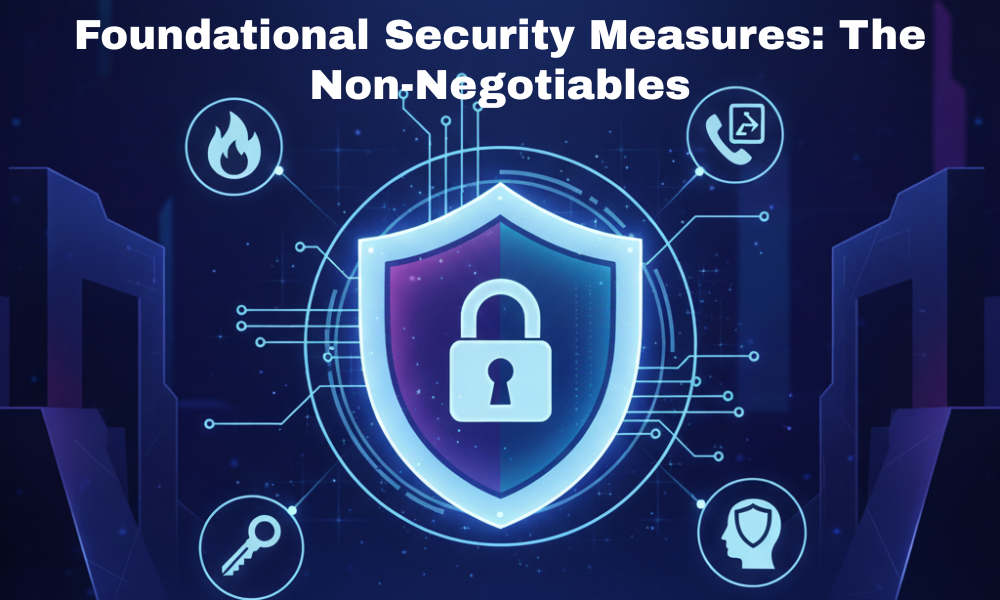
Protect your lending business with our complete guide on data security for your loan management platform. Learn about encryption, compliance, and advanced strategies to safeguard borrower data.
How to Ensure Data Security in Your Loan Management Platform
Imagine this: your lending business is thriving, but a single, unseen vulnerability in your loan management platform exposes the sensitive data of thousands of customers. The fallout is immediate—eroded trust, financial penalties, and a damaged reputation that takes years to rebuild. In the digital lending era, this isn’t just a worst-case scenario; it’s a real threat. Ensuring data security in your loan management platform is the most critical investment you can make. This guide offers a complete roadmap to fortifying your platform, protecting your customers, and securing your business’s future.
Why Data Security Matters in Loan Management
Your loan management system (LMS) handles all stages of lending—from application and credit assessment to disbursement and repayment tracking. Each stage stores crucial information such as Aadhaar, PAN, and bank details. Any compromise here can lead to identity theft, fraud, and massive data leaks. Maintaining data security helps lenders build customer confidence and comply with RBI, ISO, and India’s DPDPA 2023 frameworks.
Key benefits of secure data practices:
- Builds stronger customer relationships and brand trust
- Prevents legal actions and financial penalties
- Enhances operational continuity and data accuracy
Foundational Security Measures: The Non-Negotiables

Before diving into advanced tactics, it’s essential to get the basics right. These foundational pillars form the bedrock of a secure lending environment.
1. Implement Strong Encryption Protocols
Encryption is your first and most powerful line of defense. It scrambles sensitive data, making it unreadable to anyone without authorized access. Your platform must enforce end-to-end encryption, protecting data when it’s being transferred (in transit) and when it’s stored on your servers (at rest). Using industry-standard algorithms like AES-256 is non-negotiable. This ensures that even if a breach occurs, the stolen information remains useless to hackers, protecting everything from KYC documents to bank account numbers.
- Pros:
- Provides a powerful barrier against data theft, rendering stolen information useless.
- Helps meet compliance requirements for data protection regulations like GDPR and DPDPA.
- Cons:
- Can introduce minor latency due to the processing power required for encryption and decryption.
- Requires a robust key management system, which can be complex to maintain.
2. Deploy Multi-Factor Authentication (MFA)
Passwords alone are no longer sufficient. MFA requires users to provide two or more verification factors to gain access, such as a password combined with an OTP sent to their phone or a biometric scan. Implementing MFA for both your team members and your borrowers is a simple yet highly effective way to prevent unauthorized account access. This extra layer of security can thwart a majority of automated cyberattacks and credential-stuffing attempts, making it a crucial component of modern data security.
- Pros:
- Significantly reduces the risk of account takeovers due to stolen or weak passwords.
- Boosts customer confidence, as it’s a visible and well-understood security feature.
- Cons:
- Can add a small step to the login process, which some users might find inconvenient.
- May require integration with third-party services, adding to operational costs.
3. Establish Role-Based Access Control (RBAC)
Not everyone on your team needs access to all borrower data. RBAC operates on the principle of “least privilege,” ensuring that employees can only access the information necessary to perform their specific job functions. For instance, a collections agent might only see contact details and outstanding balances, while a credit underwriter has access to full financial statements. This segmentation minimizes the risk of internal data misuse and limits the potential damage if a single employee’s account is compromised.
- Pros:
- Reduces the “attack surface” by limiting data exposure internally.
- Simplifies auditing and compliance by creating clear, trackable user permissions.
- Cons:
- Initial setup can be complex, requiring a clear definition of all roles and responsibilities.
- Needs to be regularly updated as employees change roles or leave the company.
Proactive Defense: Advanced Strategies for Threat Prevention
Once the foundation is solid, it’s time to adopt proactive measures that anticipate and neutralize threats before they can cause harm.
4. Conduct Regular Security Audits and Vulnerability Testing
You can’t protect against threats you don’t know exist. Regular security audits, including penetration testing and vulnerability scanning, simulate cyberattacks to identify weak spots in your platform’s defenses. These tests can uncover everything from outdated software to misconfigured firewalls. By proactively identifying and patching these vulnerabilities, you stay one step ahead of attackers. Think of it as a regular health check-up for your platform’s security.
- Pros:
- Provides a realistic assessment of your platform’s ability to withstand a real-world attack.
- Helps prioritize security investments by highlighting the most critical vulnerabilities.
- Cons:
- Can be expensive, especially when conducted by third-party cybersecurity experts.
- The testing process itself can sometimes cause temporary system instability if not managed carefully.
5. Secure All Third-Party Integrations
Your loan management platform likely integrates with other services like credit bureaus, payment gateways, and CRM systems. Each of these connections is a potential entry point for attackers. It’s crucial to ensure that all APIs are secured using methods like token-based authentication (OAuth 2.0) and that data shared is minimal and encrypted. Vet your partners thoroughly to ensure they also adhere to high data security standards, creating a secure ecosystem.
- Pros:
- Protects data as it moves between different systems, preventing man-in-the-middle attacks.
- Ensures that your security posture isn’t compromised by a less secure partner.
- Cons:
- You are dependent on your partners’ security practices, which are outside your direct control.
- Managing multiple secure API connections can be technically complex and require ongoing maintenance.
6. Implement AI-Driven Fraud Detection
Modern threats require modern solutions. AI and machine learning algorithms can analyze user behavior in real-time to detect anomalies that may indicate fraudulent activity. This could include multiple login failures from different locations, unusually large transaction requests, or attempts to change account details. By flagging suspicious behavior instantly, AI-driven systems can prevent fraud before it happens, adding an intelligent and dynamic layer to your security framework.
- Pros:
- Operates 24/7 to identify and respond to threats much faster than human teams.
- Can adapt and learn from new fraud patterns, improving its effectiveness over time.
- Cons:
- Can sometimes produce “false positives,” flagging legitimate activity as suspicious.
- Implementing and training an AI model requires significant data and specialized expertise.
Operational and Human-Centric Security

Technology is only part of the equation. Your people and processes are a critical component of your data security strategy.
7. Create a Robust Data Backup and Disaster Recovery Plan
What happens if your data is lost due to a ransomware attack, hardware failure, or human error? A solid backup and disaster recovery plan is your safety net. This involves creating regular, automated, and encrypted backups of all critical data and storing them in a secure, separate location. Your plan should also outline the exact steps to restore data and resume operations, minimizing downtime and ensuring business continuity.
- Pros:
- Ensures you can recover from a data loss event with minimal disruption.
- Provides a last line of defense against ransomware attacks, allowing you to restore data without paying a ransom.
- Cons:
- Maintaining backups, especially for large volumes of data, incurs storage and management costs.
- Recovery plans must be tested regularly to ensure they work, which requires time and resources.
8. Prioritize Employee Training and Security Awareness
Your employees can be either your greatest security asset or your weakest link. Regular training on topics like how to spot phishing emails, the importance of strong passwords, and the company’s data handling policies is essential. Fostering a security-conscious culture where employees feel comfortable reporting suspicious activity can prevent many breaches before they start. Remember, a single click on a malicious link can bypass even the most advanced technological defenses.
- Pros:
- Empowers employees to become an active part of your security defense.
- A highly cost-effective way to reduce the risk of human-error-related breaches.
- Cons:
- Requires ongoing effort to keep training relevant and engaging.
- It can be challenging to measure the direct impact and ROI of security awareness programs.
9. Ensure Strict Compliance with Data Protection Regulations
Compliance isn’t just about avoiding fines; it’s about demonstrating your commitment to protecting customer data. Your platform must adhere to relevant regulations like the RBI’s IT Framework for NBFCs, India’s Digital Personal Data Protection Act (DPDPA) 2023, and international standards like GDPR. This includes having clear policies for data collection, consent, storage, and deletion. Being compliant builds trust and provides a strong legal framework for your data security practices.
- Pros:
- Builds credibility and trust with customers, partners, and regulators.
- Provides a clear, legally sound structure for your data governance policies.
- Cons:
- Navigating the complex and ever-changing landscape of data regulations can be challenging.
- Achieving and maintaining compliance can require significant legal and operational resources.
10. Choose a Trusted Loan Management Software Partner
For many lenders, the security of their platform depends heavily on their software provider. When choosing a loan management system, scrutinize its security architecture. A trusted partner like Grin Technologies will offer features like built-in encryption, RBAC, automated backups, and a commitment to regulatory compliance. Don’t just look at features; assess their security track record, certifications, and support for ongoing security updates. Your partner should be an ally in your security journey.
- Pros:
- Leverages the expertise of a specialized provider, saving you from building security from scratch.
- Ensures you benefit from regular security updates and patches without direct effort.
- Cons:
- You are placing a significant amount of trust and reliance on a third party.
- May offer less flexibility to customize security protocols compared to an in-house solution.
Final Thoughts: Security as a Continuous Journey
Ensuring data security in your loan management platform is not a one-time project; it’s a continuous process of adaptation and improvement. By combining foundational technologies, proactive defenses, and a strong security culture, you can build a resilient platform that protects your customers and your business. In the world of digital finance, trust is your most valuable asset—protect it accordingly.
Call-to-Action:
Ready to build your lending business on a foundation of trust and security? Contact Grin Technologies today to learn how our RBI-compliant loan management software can help you protect your data and scale with confidence.
Schedule a free demo today!




1 reply on “How to Ensure Data Security in Your Loan Management Platform | A Complete Guide”
[…] and document verification, speeding up loan approval processes from hours or days to just minutes. Automated data collection from multiple sources ensures that credit decisions are based on up-to-date, accurate financial […]